What is the future of Disaster Nursing in Japan? How important is Mental Health in Post-Disaster Situations?
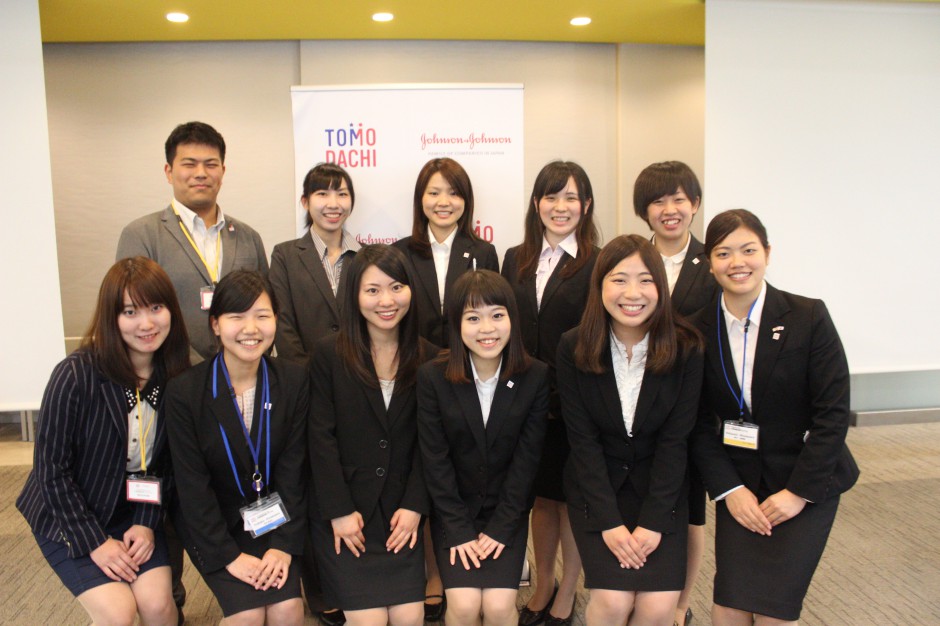
On October 24 and 25, 2015, the participants from the TOMODACHI J&J Disaster Nursing Training Program met with disaster medical care experts to present their experiences and exchange ideas at the Johnson & Johnson Tokyo Headquarters.
Ikumi Hoshi, a Sophomore at Sendai Tokushu Nursing College claimed, “as a future nurse, I want to decrease the number of stress-related deaths that stems from disaster.” She received a big applause from the audience as she talked about learning about the importance of mental health during her trip to New York and how she hopes to help others by becoming a nurse.
The Second Post-Program Presentation
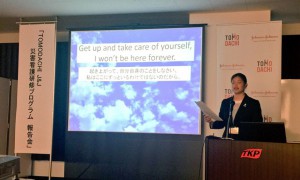 The TOMODACHI J&J Disaster Nursing Training Program, partnered with Johnson & Johnson Family of Companies in Japan, is a three-year commitment that aims to support capacity building of nurses in the Tohoku region by focusing on the field of disaster medicine. Eight nursing students from Miyagi Prefecture were selected for this pilot program.
The TOMODACHI J&J Disaster Nursing Training Program, partnered with Johnson & Johnson Family of Companies in Japan, is a three-year commitment that aims to support capacity building of nurses in the Tohoku region by focusing on the field of disaster medicine. Eight nursing students from Miyagi Prefecture were selected for this pilot program.
The program consists of three components: the first part being the Pre-Trip Seminars where specialists from the U.S. were brought to Japan to help prepare the selected students for their U.S. Study Trip; the second part of the program consisting of a study tour to New York and Washington D.C and finally a post-trip symposium to present their findings and lessons learned upon returning from the United States. The third and last part portion is comprised of three post-program presentations (PPP) in Sendai, Tokyo, and Kochi respectively that will highlight the students’ reflections on their time in the U.S. and discuss actionable next steps. The post-program presentation in Sendai focused on the students who each did a 10-min presentation on their experiences to their family, friends, teachers and community gathered to hear what their students learned while in the United States. The second PPP in Tokyo focused on the current situation of disaster nursing in Japan and the lessons the students have learned from their experiences in the U.S. The upcoming PPP in Koichi will focus on the students meeting their fellow nursing students in the region, learning about the issues they are constantly facing, and the importance of discussing and collaborating together on a better future.
Learning further about Mental Health through Psychological First Aid & Tying it all back to Community
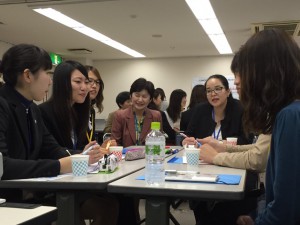 Having discovered the need for more education on mental health in Japan, program participants were able to take part in a workshop on Psychological First Aid (PFA) that focused on disaster resilience and sustainability by Mr. Taiyo Okada, a Miyagi Prefecture Board of Education Emergency Dispatch School Counselor. After the workshop, each student was given a completion certificate. Utilizing his experience, he explained to the students that during times of disaster, an outsider entering a community may have the best interest but in order to be effective, they must be aware to “not immediately bombard victims with questions, but to start off with small talk.” Roleplaying between two people – one as a medical practitioner and the other as a patient – were done to make this point. One of the students, Nao Onodera, a second-year student from Kessenuma City Hospital Nursing School, shared her experience with the group: “I struggled to grasp how much to sympathize with the patient’s concern because it is something I have never experienced.”
Having discovered the need for more education on mental health in Japan, program participants were able to take part in a workshop on Psychological First Aid (PFA) that focused on disaster resilience and sustainability by Mr. Taiyo Okada, a Miyagi Prefecture Board of Education Emergency Dispatch School Counselor. After the workshop, each student was given a completion certificate. Utilizing his experience, he explained to the students that during times of disaster, an outsider entering a community may have the best interest but in order to be effective, they must be aware to “not immediately bombard victims with questions, but to start off with small talk.” Roleplaying between two people – one as a medical practitioner and the other as a patient – were done to make this point. One of the students, Nao Onodera, a second-year student from Kessenuma City Hospital Nursing School, shared her experience with the group: “I struggled to grasp how much to sympathize with the patient’s concern because it is something I have never experienced.”
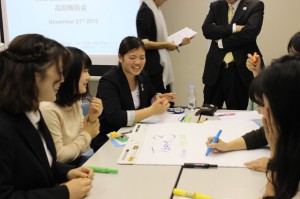 After the PFA Workshop, a TOMODACHI workshop took place that focused on helping the students outwardly reflect their lessons learned. the eight students gathered to share how they had changed after the study tour and how they will contribute to create a more disaster-resilient community. Mari Miura, a third-year student at Sendai Medical Center School of Midwifery, showed her determination: “we need to a build a strong community and I want to play a key role in that.”
After the PFA Workshop, a TOMODACHI workshop took place that focused on helping the students outwardly reflect their lessons learned. the eight students gathered to share how they had changed after the study tour and how they will contribute to create a more disaster-resilient community. Mari Miura, a third-year student at Sendai Medical Center School of Midwifery, showed her determination: “we need to a build a strong community and I want to play a key role in that.”
Presenting Key Lessons Learned
The following day, Johnson & Johnson welcomed over 50 people to their headquarters in NishiKanda where presentations and networking took place between individuals interested in the future of disaster medicine. Mr. Tamotsu Hiiro, President of Johnson & Johnson, commended the students on their rapid growth in the span of only six-months.
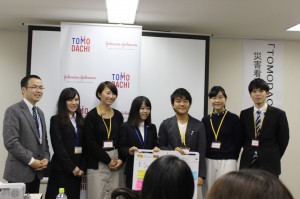
The keynote speaker was Dr. Shinichi Egawa, who mentioned the issues surrounding Disaster Nursing in Japan and how “it is important that we do not just focus on the disaster itself, but that we make sure concrete approaches are being taken alongside health.”
A panel discussion with students and professors took place afterwards. One of the topics discussed focused on the necessities of a country’s leadership for continuous countermeasures against disasters, and the importance of strengthening ties within the community before a disaster comes.
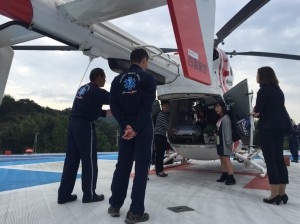 The Next Step
The Next Step
At the end of the day, the students reflected back on the past two days and discussed ways in which they plan to make use of their U.S. Study Tour experiences from here on. With a gleam of hope in her eyes, Marina Sugawara, a sophomore at Sendai Saiyo Gakuin College, remarked, “in the U.S, I learned that as a nurse, if you have the correct knowledge you can provide adequate care.


